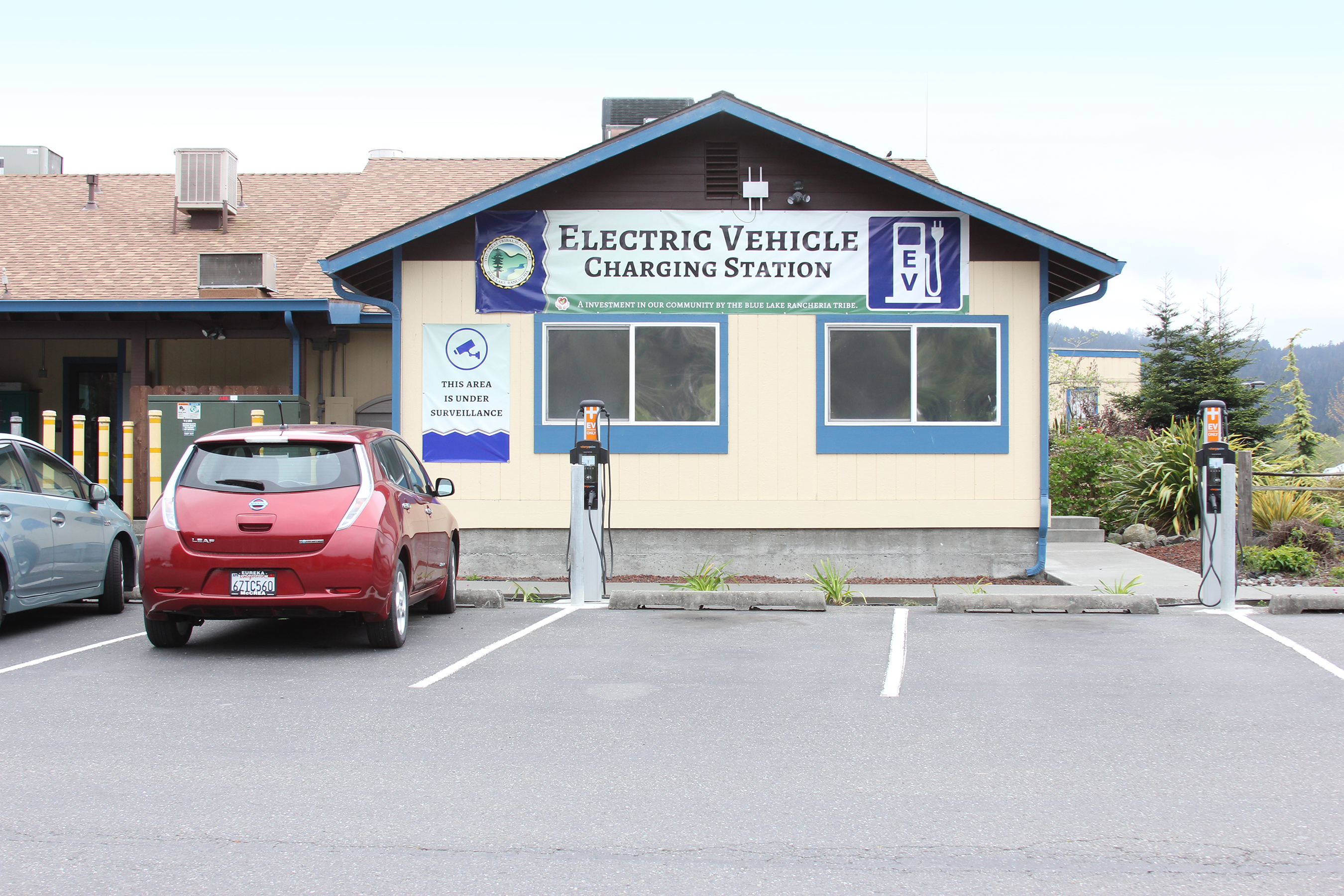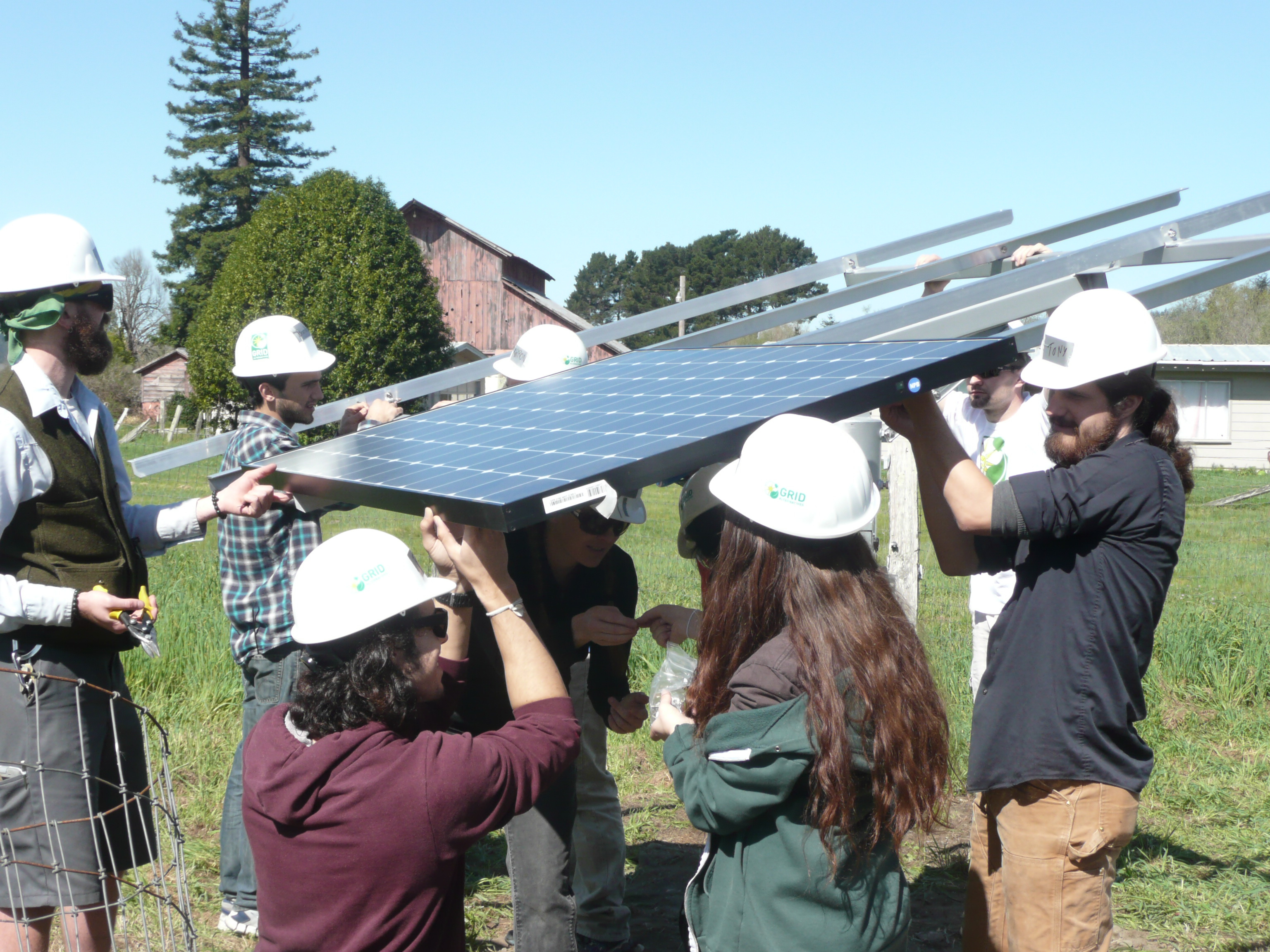
The White House launched the Climate Action Champions program in late 2014, in partnership with the U.S. Department of Energy. After a competitive application process, the Department of Energy designated 16 communities as Climate Action Champions, including two tribes: the Sault Ste. Marie Tribe of Chippewa Indians (Michigan) and the Blue Lake Rancheria Tribe (California). These tribes were selected for their local leadership in climate mitigation and adaptation.
Native American communities have a long history of determination and hard work to maintain their cultural and economic resilience. As it turns out, these same traits are needed for climate resilience. Traditional strengths of tribal communities’ include local self-reliance, environmental stewardship that respects the carrying capacity of the land, and strengthening community. These strengths are now valued attributes for coping with current and future changes.
The Sault Tribe is the largest native tribe east of the Mississippi River. It constitutes one of four Tribes and First Nations that form the Anishnabek community of the rapids of the St. Mary’s River.
The Sault Tribe is guided by the Seven Grandfather Teachings (Love, Wisdom, Bravery, Truth, Honesty, Respect, and Humility) in its leadership and community development. Responding to the threats presented by a changing climate, in particular, requires ‘Aak wade ‘ewin’ – Bravery - in facing the changes that will be coming to our children and grandchildren. As tribal chairperson Aaron Payment said, “We are part of the ecological system. It is an illusion to think we have dominion over our Aki [earth].”
Energy Strategy
The Sault Tribe has developed several strategic level plans to mitigate and adapt to climate change. The Energy Strategy (2012), in particular, calls for a strategic approach in several areas, including: demanding reduction in all energy uses, installing renewables sized and located to best meet demand, reducing reliance on the grid infrastructure and reducing vulnerability to catastrophic events. All available renewable options will be utilized and distributed across the demand centers of the seven counties to increase resilience of supply. The long term goals are to produce power from renewables to supply all power needs of the Tribe, export to the grid to offset all purchased energy (including transportation energy), and be a net-zero greenhouse gas emitter. Mother Earth demands this of us and we feel strongly that this is the right thing to do.
The Sault Tribe’s Energy Strategy has a bold long-term goal: “No Net Purchased Energy.” This means that for any energy the Tribe must purchase for its operations (including vehicles and flights), an equivalent amount of energy will be produced for export to the grid for other users. The staged approach that is detailed in this Strategy first calls for aggressive measures to reduce energy consumption before taking broad scale action with renewable energy. Planned efforts in the next three years include demand reductions of 4% per year.
Leading Regional Climate Collaboration & Action
The Sault Tribe has taken a leadership role in negotiating the groundbreaking Michigan State/Tribal Climate Accord, an agreement that sets out collaboration and consultation between the state of Michigan and the twelve tribes within its borders. The Tribe is also a leader and signatory to a treaty with the three other Tribes and First Nations bordering on the St. Mary’s River and the international border. This treaty calls for the formation of an Aboriginal Joint Commission to work toward the long term sustainability of the St. Mary’s River ecosystem. We believe this is the first such treaty and Commission of its kind.
We are a resilient people. We are committed to combatting the local impacts of climate change, and are proud to have been recognized as a Climate Action Champion. While there is still great progress to be made, we hope that our leadership will help other tribes and communities to deliver local climate action.
Some of the Sault Tribe’s achievements in climate mitigation and Adaptation to date include:
Climate Mitigation
- Lighting retrofits to 21 Governmental buildings (2011/12) totaling 11,790 lamps in 5,485 fixtures illuminating 473,747 square feet of building space.
- Every rental home has had new Energy Star windows, high efficiency boilers and water heaters, insulated steel entry doors, foam insulation, wrap, and siding, and low flow showerheads and toilets in the past six years – 438 homes.
- The three road vehicles in the Fisheries fleet all operate on waste cooking oil fuel.
- Waste reduction (methane reduction) initiatives include recycling of paper, glass, and cans in all Government buildings, Casinos, and enterprises, and curbside collection in all housing sites. A compost demonstration site and rain barrel demonstrations are set up at Environment Program operations.
Climate Adaptation
- Vulnerability assessments have been carried out for significant clan animals.
- Wetland Strategy written and being implemented.
- Establishment of native species seed bank with 111 collections of 13 species collected to date.
- Establishment of Traditional Foods program (gardening, gathering, preserving lessons) to both increase self-reliance and also (mitigation) to reduce food miles travelled and thus energy consumption. Community gardens have been planted, community kitchens established, canning and preserving lessons taught. Fruit trees and berry bushes have been planted in schoolyards and communities throughout the seven county service area.
Blue Lake Rancheria Tribe, California
The Blue Lake Rancheria Tribe of California is a federally recognized Native American tribal government and community located in far northwestern California within Humboldt County, ~6 miles inland from the Pacific Ocean coastline.
The Tribe, its government, elected leaders, and staff have made significant progress implementing greenhouse gas (GHG) reduction measures while improving community resiliency. Since 2008, the Tribe has been focused on strategic climate action planning and implementation of a wide range of projects that work in concert to reduce GHGs and improve community and regional security.
The overall strategy consists of maximizing energy efficiency, and in parallel, implementing energy resiliency measures. Such measures include onsite back-up generation and emergency power, transitioning from fossil to renewable energy to ultimately achieve 100% renewable energy use on the Rancheria, zero net GHG emissions, and actions to ensure operations for critical infrastructure and resource security for business-as-usual and short- and long-term emergency situations.
The following are just a few of the illustrative climate mitigation and adaptation actions that the Blue Lake Rancheria Tribe has achieved since 2011:
- Formation of the Tribe’s formal Department of Energy and Technologies, Office of Emergency Services, and Wildland Fire Department
- Completed FEMA Tribal Emergency Operation Plan, multiple facility-level emergency response plans, Tribal Flood / Dam Break Response plan, transportation and evacuation plans.
- Tribal leader and tribal staff trainings, including FEMA trainings, and CalEMA continuity of operations training, and emergency communications training.
- Energy audits and feasibility studies of conversions from fossil fuel to renewable energy (biomass, solar, hydroelectric, wind, waste-to-energy); waste characterization study
- Led a community-wide forum on “Climate Change Mitigation & Adaptation”
- Completed >15 energy efficiency programs including upgraded HVAC, fans, freezer and refrigeration and lighting replacement, gas station canopy lighting, complete tribal government office upgrade, including upgraded refrigeration/fans and replacement of all hard-wired fluorescent lighting and inefficient screw-in light bulbs
- Installation of solar arrays for low-income residences on the Rancheria
- Installation of electric vehicle charging stations
- Installation of biodiesel manufacturing using waste oil from the Tribe’s kitchens
- Agreement with the American Red Cross to act as a shelter-in-place
- Implementation of a 175kW biomass distributed generation fuel cell renewable energy system
Green Fuels
The Tribe has a particular focus on transition to green fuels. Partnering with Humboldt State University engineering students on feasibility, the Tribe found that biodiesel manufacturing had environmental and economic benefit. For example, using waste oil from its own commercial kitchens, the Tribe fueled its public transit buses. The transit program saved thousands per year and achieved significant GHG reductions even with a 20% biodiesel blend. Fully operational now, bus performance has also been excellent – gas mileage has remained the same and the engines are running smoothly. The other primary fuel-switching project to date has been transitioning the tribal fleet to electric vehicles and installing two Level 2 electric vehicle charging stations. The Tribe ultimately seeks to power both the biodiesel plant and the electric vehicle charging stations with renewable energy produced onsite.
Solar & Microgrid
The hope of utilizing solar and microgrid will become a reality in the next two years as the Tribe implements a ~.5 MW solar array and a microgrid control system. Estimated to be complete in 2017, the Tribe’s microgrid will provide for greater demand response and peak shaving in a business-as-usual mode. In emergency situations, the microgrid will operate in islanded mode, separate from the grid, and allow the Tribe to provide the region with emergency power for as long as it is needed.
Partnerships
The Tribe’s partnerships at the local, regional, state and national level are the most important component of the Tribe’s ability to carry so many projects forward in a relatively short time. The local expertise in engineering and environment at Humboldt State University, the Schatz Energy Research Center, and the Redwood Coast Energy Authority have been the primary determining factor in the success of the Tribe’s energy efficiency, renewable energy, and green fuels projects. On the state level, the California Energy Commission, Pacific Gas & Electric utility, and individual project partners such as GRID Alternatives have provided outstanding strategic funding and operational assistance. On the national level, the U.S. Department of Energy, Office of Indian Energy Policy and Programs, U.S. Department of Interior, Bureau of Indian Affairs, U.S. Department of Agriculture Rural Development, and other important agencies such as the National Oceanic and Atmospheric Administration, U.S. Environmental Protection Agency, and the U.S. Department of Transportation - among many others - have provided significant and ongoing support and guidance. Lastly, the Tribe has been fortunate in its public/private partnerships as well, with several private technology partners who have contributed financially, technically, and operationally to various projects.
The Climate Action Champion recognition is a true honor, and the Blue Lake Rancheria Tribe hopes that by sharing some of its work, it will generate ideas and projects in other small communities. As Vice Chairperson Arla Ramsey commented, “The Tribe hopes to serve as an example that a very great amount of climate action can be done, in a very short time, by making best use of limited resources.”
We hope, on this beautiful Earth Day, that our work (and the work of our respective tribal governments, our fellow Climate Action Champions, and everyone who is working toward a stable planet) shines light on what actions are possible – right now – to fight climate change and deal with the impacts that are already here. We wish you a very good Earth Day.
Kathie Brosemer is an Environmental Program Manager at Sault Ste. Marie Tribe of Chippewa Indians and Jana Ganion is the Energy Director at Blue Lake Rancheria, California.



